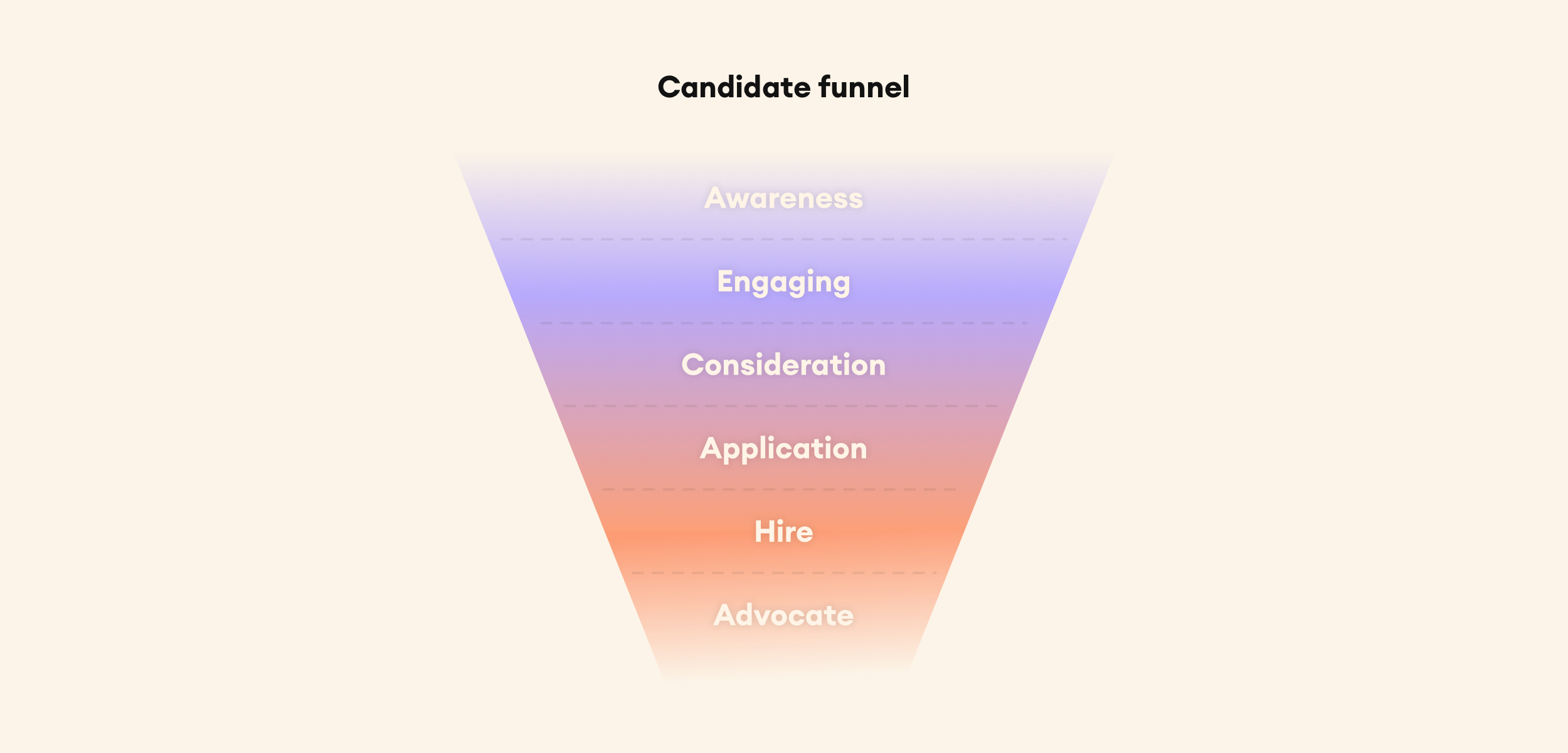In today’s competitive job market, attracting and retaining top talent is a challenge most businesses face. To stand out from the crowd and connect with the right candidates, two teams have to work hand in hand: Recruitment Marketing and Employer Branding. While these two teams have similar goals, they serve different purposes and require separate strategies. Let’s dive into the nuances of each and understand how they contribute to building a strong workforce.
We spoke to Timothy Schepis, Global Employer Brand Director at Coupang, the largest online marketplace in South Korea and one of the fastest-growing e-commerce companies. Previously at Amazon, Timothy brings invaluable expertise to the realm of employer branding. Coupang’s outstanding commitment to cultivating an exceptional employer brand led them to win the LinkedIn Employer Brand of the year award for both 2021 and 2022.
Read on to gain insights into the difference between Recruitment Marketing and Employer Branding, to unlock the secrets to building a powerful Employer Brand and attracting the best candidates for your organisation.
What is Recruitment Marketing?
Recruitment Marketing is the tactical aspect of talent acquisition. It focuses on short-term goals, such as filling immediate job openings. As Timothy says, recruitment marketing is how you can fill a seat today.
This approach utilises marketing principles and techniques to attract and engage candidates actively searching for employment. Recruitment Marketing teams employ various strategies, including job advertisements, social media campaigns, and targeted messaging, to capture the attention of potential applicants.
Segmentation and understanding the thought process of talent communities can help tailor content to speak the language of the customer effectively.
What is Employer Branding?
On the other hand, Employer Branding takes a more holistic and long-term approach. It encompasses the overall reputation and perception of an organisation as an employer. Employer Branding aims to create a positive and compelling employer brand that resonates with both current and potential employees. It’s how you want people to talk about you when you’re not in the room, says Timothy.
This strategy focuses on building a strong Employee Value Proposition, crafting an authentic Employer Brand story, and cultivating a positive candidate and employee experience.
We’ll deliver our latest content straight to your inbox
How to break down the silos between Employer Brand and recruiters?
Balancing the long-term goal of brand building with the short-term need to fill vacancies is a challenge. It is important to align with recruiters to ensure their messaging is consistent with the brand.
Securing budget for both Employer Brand and Recruitment Marketing is crucial, as brand awareness and ongoing campaigns are essential for attracting top talent.
When balancing Employer Brand or Recruitment Marketing activities, Timothy highlighted the importance to focus on the Employee Value Proposition (EVP) that candidates desire, rather than solely promoting what the company wants.
At Coupang, he uses Seenit to create employee-generated content throughout the candidate funnel. For example, a ‘Meet the team’ or role introduction video, for potential employees to watch during the recruitment and interview process.

“Partnering with Seenit has allowed us to tell more of our employees’ stories and reach and engage with our candidate audience in ways we never could before and without them”
- Timothy Schepis, Global Employer Brand Director, Coupang
To break down the silos between Employer Branding and recruiters, foster collaboration and open communication. Encourage regular meetings, share insights and goals, and involve recruiters in the employer branding process. Creating a unified approach will enhance the alignment between Employer Brand and recruitment teams, leading to better talent acquisition outcomes.
Metrics for success
Both Recruitment Marketing and Employer Branding rely on metrics to measure their effectiveness and success. Let’s take a look at some key metrics for each:
Employer Brand metrics
Engagement rate
Measures the level of interaction and interest in Employer Brand content, such as likes, comments, and shares on social media platforms.
View-through rate
Evaluates how many individuals view Employer Brand videos or content until the end.
Brand lift during a campaign
Assesses the increase in brand awareness and perception during a specific Employer Brand campaign.
Click-through rate
Measures the percentage of individuals who click on Employer Brand advertisements or links.
Recruitment Marketing metrics
Impressions
Tracks the number of times a recruitment marketing message or advertisement is displayed to potential candidates.
Clicks
Measures the number of times candidates click on Recruitment Marketing content or advertisements.
Applications
Tracks the number of candidates who submit applications in response to recruitment marketing efforts.
Filled roles
Evaluates the number of positions successfully filled through Recruitment Marketing strategies.
Time to hire
Measures the duration between a job opening and the final hiring decision.
Cost per hire
Assesses the financial investment required to fill a job opening.
By understanding and leveraging these metrics, organisations can optimise their Recruitment Marketing and Employer Branding efforts, ensuring they attract and retain the right talent for their businesses.
Summary
In conclusion, Recruitment Marketing and Employer Branding play complementary roles in talent acquisition. While Recruitment Marketing focuses on short-term goals of filling immediate job openings, Employer Branding takes a more long-term approach to build an appealing employer brand.
By striking the right balance between these two strategies and tracking the appropriate metrics, organisations can enhance their ability to attract, engage, and retain top talent in today’s competitive job market.




